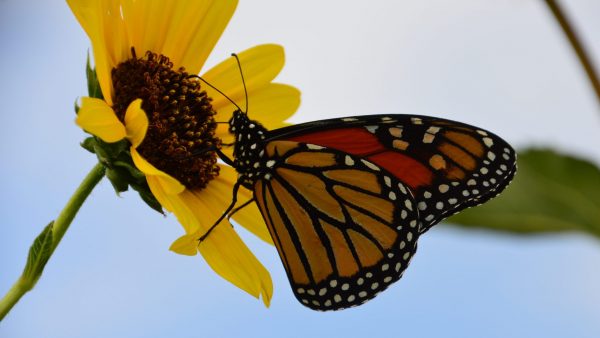Take Flight for Monarch Butterflies

The Western Association of Fish and Wildlife Agencies (WAFWA) is taking the lead on monarch butterfly conservation in the West.
The Western Association of Fish and Wildlife Agencies (WAFWA) is taking the lead on monarch butterfly conservation in the West. WAFWA convened a “Take Flight Conservation” meeting in Reno, Nevada in late June to begin implementing the conservation strategies outlined in the Western Monarch Butterfly Conservation Plan.
Nearly 60 participants took part in the discussions to identify short and long-term actions to conserve the population of monarchs in the western United States. County, state and federal wildlife, agriculture land management and transportation agencies were at table, as were universities, non-profits, consultants, and others who advocate for pollinators like the monarch butterfly.
The meeting included presentations on monarch biology, conservation efforts, and an overview of the plan. Breakout sessions were held to focus on identifying conservation and research needs and on ways partners can implement priority conservation actions.
“The 2019 Take Flight meeting was a tremendous jumping-off point for accomplishing the goals of the Western Monarch Butterfly Conservation Plan. “There were insightful presentations on monarch biology and conservation, and the break-out groups forged valuable collaborative relationships. The meeting had the kind of synergy that should translate into a brighter future for the species.”
Joel Trumbo, Chair of the Western Monarch Working Group
The plan was adopted by WAFWA in January, and it establishes population size and habitat conservation goals, strategies, and actions for the monarch butterflies that overwinter along the California coast and range primarily across California, Arizona, Nevada, Washington, Oregon, Idaho and Utah.
The monarch butterfly is an iconic species in North America and its annual migration cycle is one of the most remarkable natural phenomena in the world. However, over the past 20 years, the monarch butterfly population has declined by more than 80 percent throughout much of its range. Several other pollinators have experienced similarly dramatic declines in recent decades. Habitat loss for breeding and foraging is a primary threat to many of these species. Since January 2018, WAFWA member states have been leading the effort to develop a strategy to enhance and conserve monarch populations west of the Rockies.
Link to: Western Monarch Butterfly Conservation Plan
Comments (0)